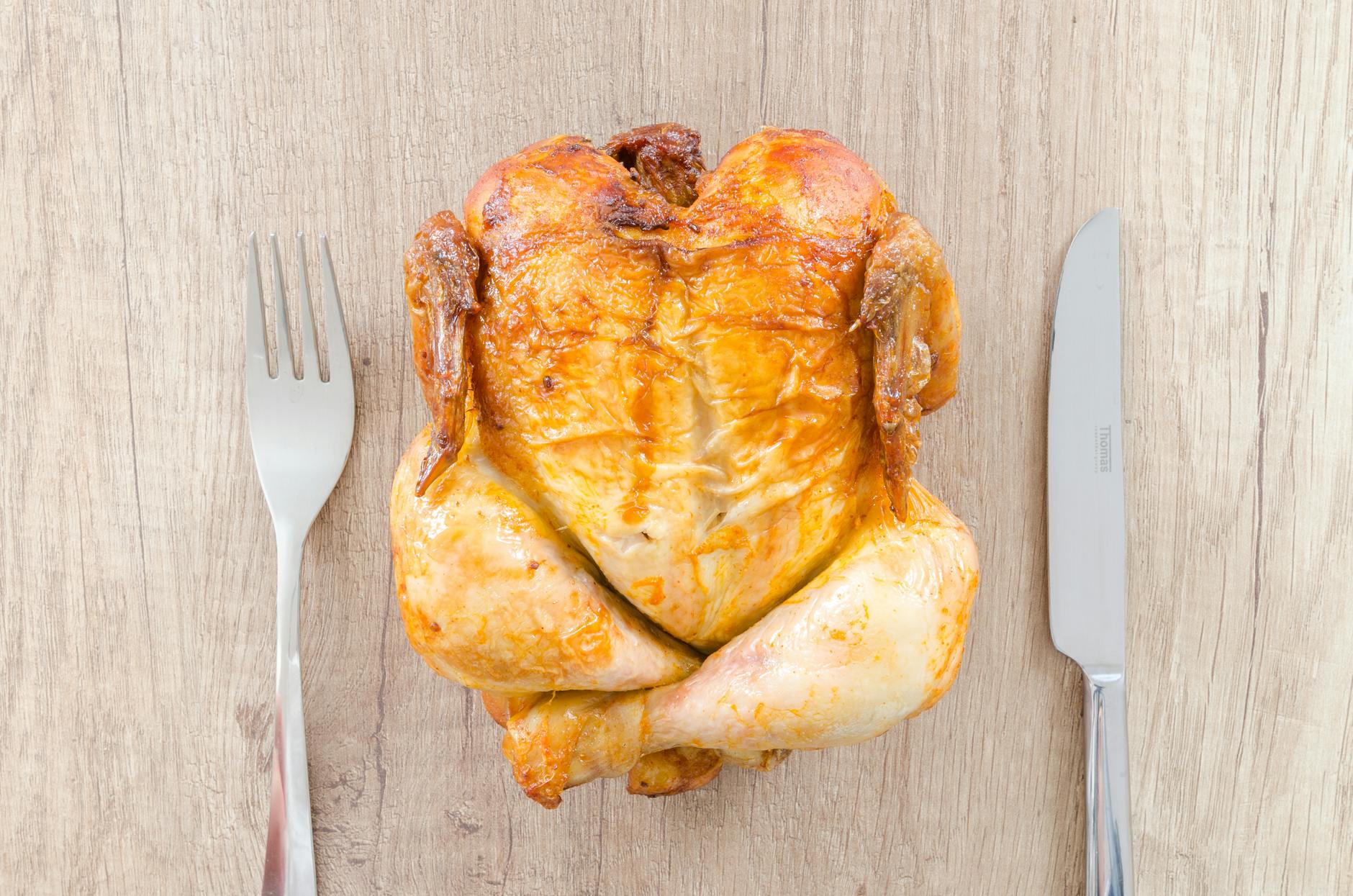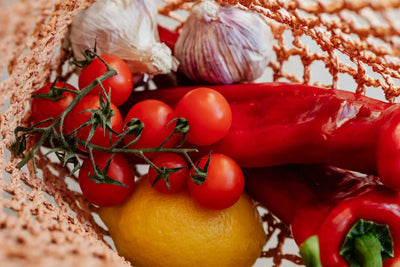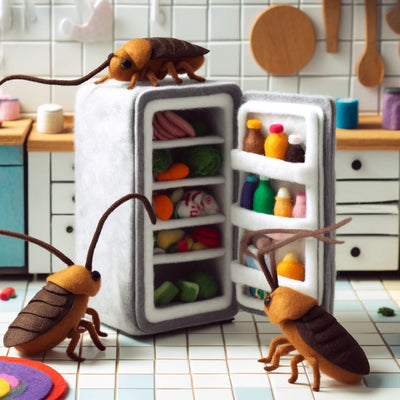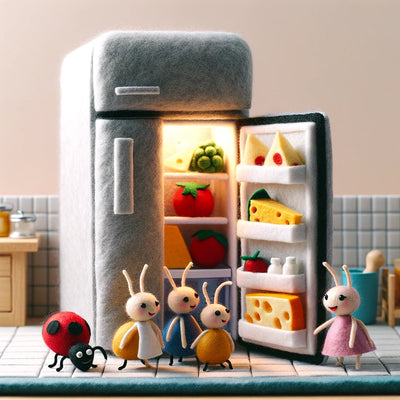Importance of Proper Chicken Storage
Why Proper Chicken Storage Matters
Proper storage of cooked chicken in your refrigerator is essential for several reasons. When you store chicken correctly, you extend its shelf life, maintain its flavor and texture, and, most importantly, ensure it remains safe to eat. Chicken is a versatile protein that can be used in various meals throughout the week, so knowing how to preserve its quality after cooking is beneficial for meal planning and reducing food waste.
By understanding the best practices for chicken storage, you can prevent the growth of bacteria such as Salmonella and Campylobacter, which are commonly associated with poultry. This is crucial for protecting yourself and your family from foodborne illnesses. For more insights on prolonging the freshness of your leftovers, you might want to read say goodbye to food waste prolonging leftovers in the fridge.
Risks of Improper Chicken Storage
The risks associated with improper chicken storage are significant. If cooked chicken is not stored at the correct temperature or is left out for too long, it can become a breeding ground for bacteria. Consuming spoiled chicken can lead to food poisoning, which may result in symptoms like nausea, vomiting, diarrhea, and fever.
Moreover, improper storage can also affect the quality of the chicken, leading to dryness, off-flavors, and a compromised texture. To avoid these risks, it is critical to follow safe storage guidelines and keep your chicken at the recommended temperature. Discover more about maintaining the right refrigerator conditions in our article on mastering the perfect chill what temperature should your fridge be.
In the next sections, we will delve into the best practices for handling, storing, and reheating cooked chicken, ensuring that you enjoy your meals safely and deliciously. For an in-depth look at how long cooked chicken can be kept in the fridge, be sure to visit the cold truth discovering the lifespan of cooked chicken in the fridge.
Safe Handling Practices
When it comes to storing cooked poultry like chicken, following safe handling practices is paramount to avoid foodborne illnesses and ensure your safety. These practices are crucial not only for storing chicken but also during the preparation process.
Washing Hands and Surfaces
Before and after handling chicken, make sure to wash your hands thoroughly with soap and warm water for at least 20 seconds. Cleanliness is key to preventing the spread of bacteria. Additionally, all surfaces and utensils that come into contact with raw chicken should be sanitized. This includes countertops, cutting boards, knives, and any other tools used.
- Wash hands before and after handling chicken
- Use hot, soapy water to clean surfaces and utensils
- Sanitize countertops with a suitable disinfectant
Using Separate Cutting Boards
To avoid cross-contamination, it's best to use separate cutting boards: one for raw meats, like chicken, and another for ready-to-eat foods such as vegetables and fruits. If you only have one cutting board, make sure to thoroughly wash it with hot, soapy water after preparing the chicken and before using it for other foods.
- Use designated cutting boards for raw meat and other foods
- Clean cutting boards thoroughly between uses
- Consider color-coded cutting boards to help prevent cross-contamination
Following these safe handling practices will help ensure that your chicken storage secrets keep your cooked chicken safe to eat. For more information on prolonging the freshness of your leftovers, refer to our guide on prolonging leftovers in the fridge. If you're considering upgrading your kitchen tools or appliances, explore our article on retro looking refrigerators or the innovative 48 inch french door fridge for that perfect blend of style and functionality.
How to Store Cooked Chicken in the Fridge
Proper storage of cooked chicken in the refrigerator is essential to maintain its quality and safety. By following these guidelines, you can ensure that your chicken remains delicious and safe to consume.
Cooling Down Chicken Properly
Before placing cooked chicken in the refrigerator, it's imperative to cool it down appropriately to prevent the growth of harmful bacteria. Here’s how you can cool your chicken safely:
- Allow the chicken to cool at room temperature for no longer than two hours.
- To expedite the cooling process, divide larger portions into smaller, thinner pieces.
- Place the chicken in a wide, shallow container to allow even cooling throughout.
Remember, prompt refrigeration of cooked chicken minimizes the risk of foodborne illness. For more insights on preserving your meals, explore say goodbye to food waste prolonging leftovers in the fridge.
Storage Containers and Packaging
Selecting the right storage containers and packaging is crucial for extending the shelf life of your cooked chicken:
- Airtight Containers: Utilize airtight containers to seal in freshness and prevent the transfer of odors.
- Wrap Tightly: If you prefer, wrap the chicken tightly in aluminum foil or plastic wrap. Ensure there are no gaps.
- Label and Date: Label your containers or packaging with the date to keep track of how long the chicken has been stored.
| Storage Method | Description |
|---|---|
| Airtight Containers | Prevents air exposure and keeps chicken moist. |
| Aluminum Foil | Suitable for wrapping individual portions. |
| Plastic Wrap | Good for covering bowls or wrapping chicken directly. |
It's essential to store your cooked chicken correctly to enjoy its flavors and nutrients without health risks. For an in-depth look at chicken's shelf life, see the cold truth discovering the lifespan of cooked chicken in the fridge.
Maximizing Shelf Life
Proper storage of cooked chicken in the refrigerator is essential for maintaining its freshness and safety. To ensure the shelf life of your chicken is maximized, it's important to adhere to recommended temperature settings and to understand the best placement for chicken within the fridge.
Recommended Temperature for Fridge
The optimal temperature for your refrigerator should be set at or below 40°F (4°C). This temperature range inhibits the growth of harmful bacteria and helps keep your cooked chicken safe to eat for a longer period. An internal fridge thermometer can help you monitor the temperature more accurately. For more insights into setting the right temperature, explore our article on mastering the perfect chill: what temperature should your fridge be.
| Fridge Section | Temperature |
|---|---|
| Main compartment | ≤ 40°F (4°C) |
| Deli drawer | ≤ 40°F (4°C) |
| Door shelves | Slightly warmer than main compartment |
Ideal Placement in the Fridge
The placement of cooked chicken in the refrigerator can affect its shelf life. It's best to store chicken on the lower shelves to prevent any juices from contaminating other foods. Also, ensure that the chicken is not stored in the door shelves, as the temperature there is more prone to fluctuations.
Below is a guide for ideal placement:
| Fridge Section | Item Placement | Reason |
|---|---|---|
| Lower shelves | Cooked chicken | Cooler and more stable temperatures |
| Upper shelves | Foods that do not require cooking | Avoid cross-contamination |
| Door shelves | Condiments, not perishable items | Prone to temperature changes |
For a comprehensive understanding of how to extend the shelf life of various foods in your fridge, you might be interested in our article on say goodbye to food waste: prolonging leftovers in the fridge.
Remember that while these tips can help maximize the shelf life of your cooked chicken, it's always crucial to check for signs of spoilage before consumption. For more detailed information on the storage life of cooked chicken, refer to the cold truth: discovering the lifespan of cooked chicken in the fridge.
Signs of Spoiled Chicken
Knowing how to detect spoiled chicken is crucial for maintaining food safety and preventing foodborne illnesses. As cooked chicken begins to spoil, several signs become visible and detectable through smell and texture. It is essential to recognize these indicators to ensure that you consume your chicken while it's still fresh and safe to eat.
Visual Indicators
Spoilage of cooked chicken can be detected by a change in color. Fresh cooked chicken has a uniform color that can range from white to golden brown depending on how it's cooked. When chicken starts to spoil, you might notice it developing a grayish hue, or green spots which are signs of mold growth.
| Freshness Indicator | Description |
|---|---|
| Fresh Cooked Chicken | Uniform white to golden brown color |
| Spoiled Cooked Chicken | Dull gray color, presence of green spots indicating mold |
If you see any discoloration or signs of mold, it's best to discard the chicken immediately to avoid the risks associated with consuming spoiled food. For more information on how to extend the freshness of your leftovers, visit our article about prolonging leftovers in the fridge.
Smell and Texture
The scent of cooked chicken is another reliable indicator of its quality. Fresh chicken has a mild smell that is not overpowering. If your chicken emits a sour or unpleasant odor, it's a clear sign that it has gone bad.
In terms of texture, cooked chicken should be moist and tender. When chicken spoils, it can become slimy or tacky to the touch. This change in texture is a result of bacterial growth and is a warning sign that the chicken should not be consumed.
| Sensory Indicator | Fresh Cooked Chicken | Spoiled Cooked Chicken |
|---|---|---|
| Smell | Mild, not overpowering | Sour, unpleasant odor |
| Texture | Moist, tender | Slimy, tacky |
Always trust your senses. If the chicken doesn't look, smell, or feel right, it's better to err on the side of caution and dispose of it. Remember, consuming spoiled chicken can lead to foodborne illnesses, which are serious and can result in severe health complications. For insights into the proper storage of cooked chicken, take a look at our guide on how long can cooked chicken be stored in the fridge.
Reheating Safely
Ensuring that your cooked chicken is reheated safely is just as important as storing it correctly. By following best practices for reheating, you can enjoy your chicken dishes without risking foodborne illness.
Best Practices for Reheating Chicken
Reheating chicken to the right temperature is essential to kill any potential bacteria that may have developed during storage. Here are the steps you should follow:
- Preheat your oven, stovetop, or microwave to the appropriate reheating temperature.
- Place the chicken in a heat-resistant dish or container if using an oven or stovetop.
- Cover the chicken to retain moisture and ensure even heating.
- Heat the chicken until it reaches an internal temperature of 165°F (74°C). Use a food thermometer to check the temperature at the thickest part of the meat.
For specific temperature settings and cook times, refer to our article on the cold truth discovering the lifespan of cooked chicken in the fridge.
Avoiding Recontamination
To prevent recontamination of your cooked chicken during the reheating process:
- Always wash your hands before handling the chicken.
- Use clean utensils and dishes to transfer and serve the chicken.
- Do not use the same dish that was used for storing the chicken unless it has been thoroughly washed.
- Avoid letting the reheated chicken come into contact with any raw foods or surfaces that have not been cleaned.
Following these guidelines will help ensure that your reheated chicken is not only delicious but also safe to eat. For more insights into safe food storage and handling, explore other topics such as say goodbye to food waste prolonging leftovers in the fridge and the culinary edge experiencing the 48 inch french door fridge.
Freezing Leftover Chicken
Preserving the quality of cooked chicken is essential for preventing food waste and ensuring that you can enjoy your leftovers safely. Freezing is an effective method to extend the shelf life of cooked chicken, and it's important to follow the right techniques for freezing and thawing.
Proper Freezing Techniques
When freezing leftover chicken, the goal is to protect it from freezer burn and preserve its texture and flavor. Below are steps you should follow:
- Allow the chicken to cool to room temperature before freezing to prevent the growth of harmful bacteria.
- Portion the chicken into serving sizes so you can thaw only what you need later.
- Use airtight containers or heavy-duty freezer bags to store the chicken, eliminating as much air as possible.
- Label and date the packaging to keep track of how long the chicken has been in the freezer.
- Freeze the chicken promptly after it has cooled and has been packaged.
For more detailed information on prolonging the life of leftovers, check out our article on say goodbye to food waste prolonging leftovers in the fridge.
Thawing Chicken Safely
Thawing chicken correctly is just as important as freezing it properly. Here are safe methods to thaw your frozen cooked chicken:
- Refrigerator Thawing: Transfer the frozen chicken to the refrigerator and allow it to thaw slowly. This can take several hours, so plan ahead.
- Cold Water Thawing: Place the airtight packaged chicken in cold water, changing the water every 30 minutes until it's thawed.
- Microwave Thawing: Use the defrost function on your microwave if you're in a hurry. Cook the chicken immediately after thawing.
It's vital to never thaw chicken at room temperature as it can encourage bacterial growth. Once thawed, cooked chicken should be consumed within 24 hours for best quality and safety. For more insights on chicken storage, visit our article on the cold truth discovering the lifespan of cooked chicken in the fridge.
Remember, safety is paramount when handling cooked chicken. By following these freezing and thawing techniques, you can enjoy your delicious chicken dishes without worry.
Additional Tips for Chicken Storage
Ensuring your cooked chicken remains safe and delicious involves more than just correct refrigeration. Here are additional tips to help you maintain the quality and safety of your stored chicken.
Labeling and Dating Containers
One of the best practices for chicken storage is labeling and dating your containers. This step is essential in preventing foodborne illnesses and reducing food waste. When you store cooked chicken, use a marker or label to note the date it was cooked. This will help you track how long it's been in the fridge and ensure you use it within safe timeframes.
| Storage Method | Label Information |
|---|---|
| Refrigeration | Cooked Date, Use-By Date |
| Freezing | Cooked Date, Freezing Date, Expected Use-By Date |
For more details on how to manage leftovers effectively, you can read say goodbye to food waste prolonging leftovers in the fridge.
Using Chicken within Recommended Timeframes
It's crucial to consume cooked chicken within recommended timeframes to avoid the risks of foodborne illnesses. Typically, cooked chicken should be eaten or frozen within 3 to 4 days when stored in the refrigerator. If you've frozen your chicken, it's best to use it within 4 months for optimal quality, although it remains safe beyond this period if kept frozen continuously.
| Storage Location | Timeframe |
|---|---|
| Refrigerator | 3-4 days |
| Freezer | Up to 4 months (best quality) |
For a comprehensive look at the longevity of cooked chicken and other food items in your kitchen, explore articles such as the cold truth discovering the lifespan of cooked chicken in the fridge and unlocking the mystery how long do onions really last in the fridge.
By incorporating these additional storage tips into your routine, you'll ensure that your cooked chicken remains a safe and enjoyable part of your meals. Remember, proper storage is key to maintaining the flavor, texture, and safety of your chicken.
Get Your Upgrade or New Addition at Fridge.com
Shop the world's best brands at Fridge.com.
Whether you're searching for your perfect fridge, freezer, wine fridge, beer fridge, ice maker, or kegerator, we have what you need.
We also have tons of awesome articles about kitchen stuff and home news. Enhance your home, garage, backyard, patio, and office with the coolest essentials. With every necessary type of residential refrigerator or freezer in our collection, we've got you covered.
Elevate your game and shop now at Fridge.com!






